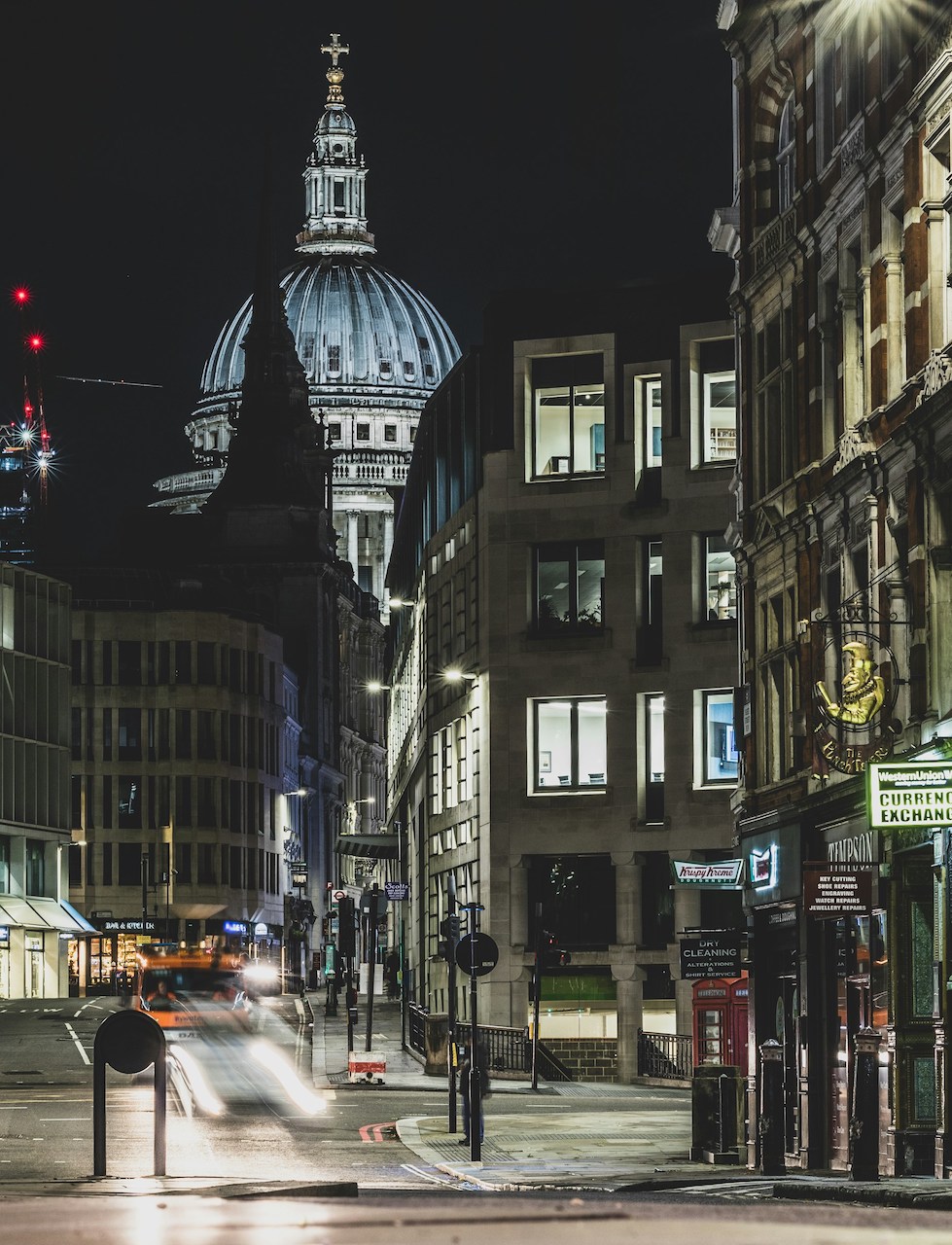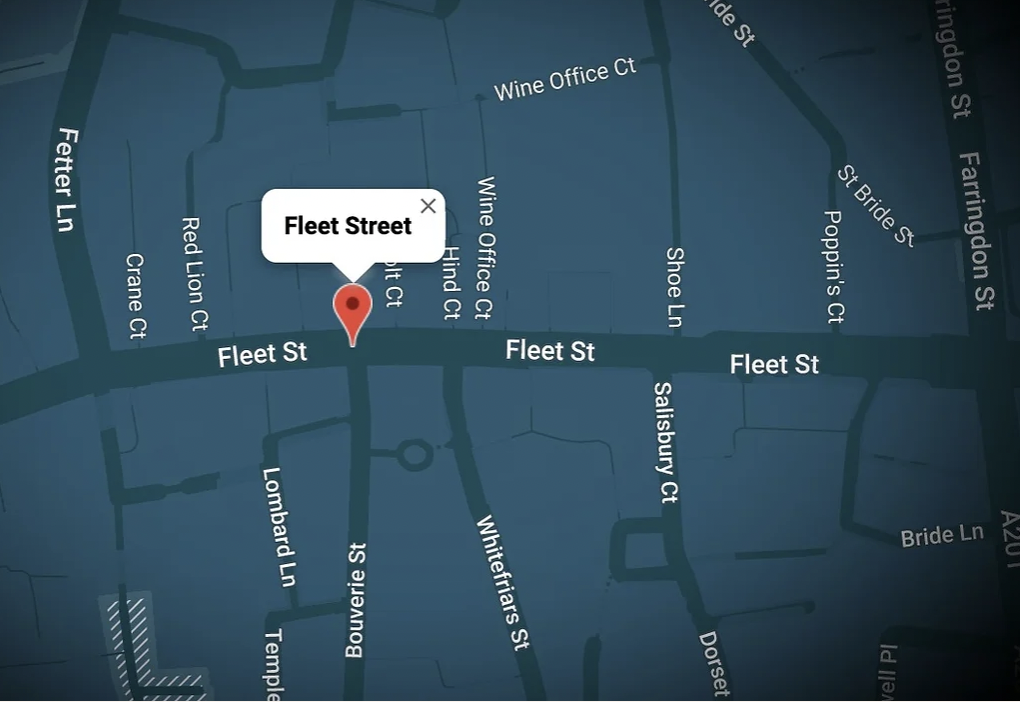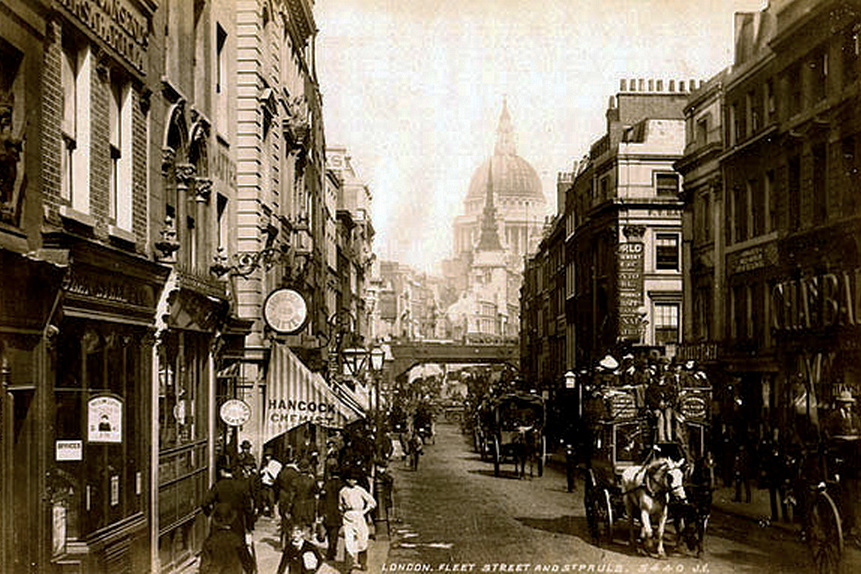Post
Fleet Street: The remarkable remaking of Peterborough Court
4 Mar 2024
The famous former home of Telegraph newspapers is undergoing a transformation that epitomises the reinvention of the Square Mile.
Walk up Fleet Street from Ludgate Circus and arrive at a crucible of London’s post-pandemic reinvention. To your left, tucked away, stands St Bride’s church, epitomising the element of this part of the Square Mile that is ancient, inviolate and feels timeless.
Next to it, a brand new City of London police station and law courts are set to rise from a cleared site. And directly across the road, a remnant of the street’s past as the home of British newspapers is undergoing a makeover in which history and an unfolding future are ingeniously reconciled.
Check out our rundown of upcoming events
The Telegraph building, as it is often still called, is unmissable. Though put up in the 1880s, it took its current striking form in 1927, revamped as an Art Deco beauty, complete with Egyptian-style detail and an extraordinary clock. Behind it, a print site was added in Peterborough Court, whose name is derived from ecclesiastical high-ups of that town having had accommodation there. It was adopted for the Daily Telegraph’s now defunct diary column.
Journalism jettisoned
The newspaper moved out in the late 1980s, as part of the industry’s great exodus. In 1991, consolidating the incursion of financial services, the site became the first European headquarters of US investment bank Goldman Sachs, which also took up residence in the neighbouring, equally-celebrated Daily Express building.
The City’s “Big Bang” era was well and truly underway. But in 2019, the bank moved to new premises nearby. And after Covid-19 hit London early in the following year it very soon became clear that a new age of great change was dawning.
The old Telegraph building – Daniel House, as it officially now is – and the Peterborough Court offices are, to put it starkly, having their innards taken out and a whole new set of key internal organs inserted. Started just over a year ago, it’s a refurbishment so extensive that redevelopment might be a better word for it, even though it doesn’t involve knocking the place down.
Subscribe to the London Society newsletter
The ambitious operation is being led by Phillip Bennison, managing director of Intense Capital on behalf of investors in Qatar, who bought the freehold back in 2012. I interviewed Bennison in his commodious office high up on the site for The London Society’s documentary podcast series, London Explained. After taking me through the area’s impressive backstory, he gave an exposition of how the building is being reborn to fit modern day requirements. “Sustainable” is the watchword here.
“We’ve taken out gas, we’ve taken out all the diesel, all the carbon aspects that people don’t like these days,” Bennison said. The whole place is all-electric. Seventy-five tonnes of air source heat pump have been installed on the roof.
Raised floors and suspended ceilings have gone, along with the old wiring and plumbing and lifts. It helped greatly that Kohn Pederson Fox, the US architects who designed for Goldman Sachs, provided the drawings they had made at the time. “There’s a lot of steel, glass and concrete here. If you start hacking around in the wrong places, it can soon get very expensive.”
Appealing to a more diverse audience
The whole vibe of the place has to be different, too. Bennison emphasised that the building previously had a single occupier with a single purpose. Its staff were rigidly office-based, in line with an ethos that no longer applies. “In its next life, it needs to be much softer,” Bennison said. “It needs to appeal to a broader spectrum, probably a slightly younger audience as well. It needs to be a little bit more colourful and playful.”
The building’s owners are big in hotels. They want the new Peterborough Court to be more hospitable, as well as flexible and suitable for a range of businesses. That onus is in line with an observation in the podcast by Lady Lucy French, chief executive of the Fleet Street Quarter business improvement district (BID) set up to help drive the renewal of that part of the City, that, perhaps for the first time ever, “the employee is really king in terms of how offices are shaped”.
Bennison summed up a “a big challenge” for the office sector as a whole: “How do you attract people out from their bedrooms or their studies, back into London?” It is question that applies across the Square Mile, one the City and the four BIDs that operate within in it have been urgently addressing.
Working from home, already a trend prior to the pandemic but massively accelerated by it, has prompted a major reassessment within the Square Mile of the financial district’s purpose and priorities.
The City of London Corporation’s Destination City programme is seeking to attract visitors to the Square Mile with events and the promotion of its extraordinary built environment history, much of it still intact.
No longer Out Office
The development sector is responding to that reinvention imperative too, as Bennison’s points about colour and playfulness illustrate – make an office building an enjoyable place to be in amid pleasurable surroundings, with welcoming public realm and places for socialising after work, and the “return to the office” many employers crave might gather pace, adding to the area’s reinvigoration.
The Peterborough Court scheme seems to be proceeding briskly, with over 360 people working on it every day. Word is that it will reach “practical completion” by December and early office and other lettings will be announced in the coming weeks.
The renewed building will feature a top floor restaurant offering a view of St Paul’s looking down from Ludgate Hill – a symbol, perhaps, of an ongoing negotiation between old and new that is integral to the Fleet Street area’s future.
Dave Hill is editor and publisher of OnLondon.co.uk.
First published in On London


